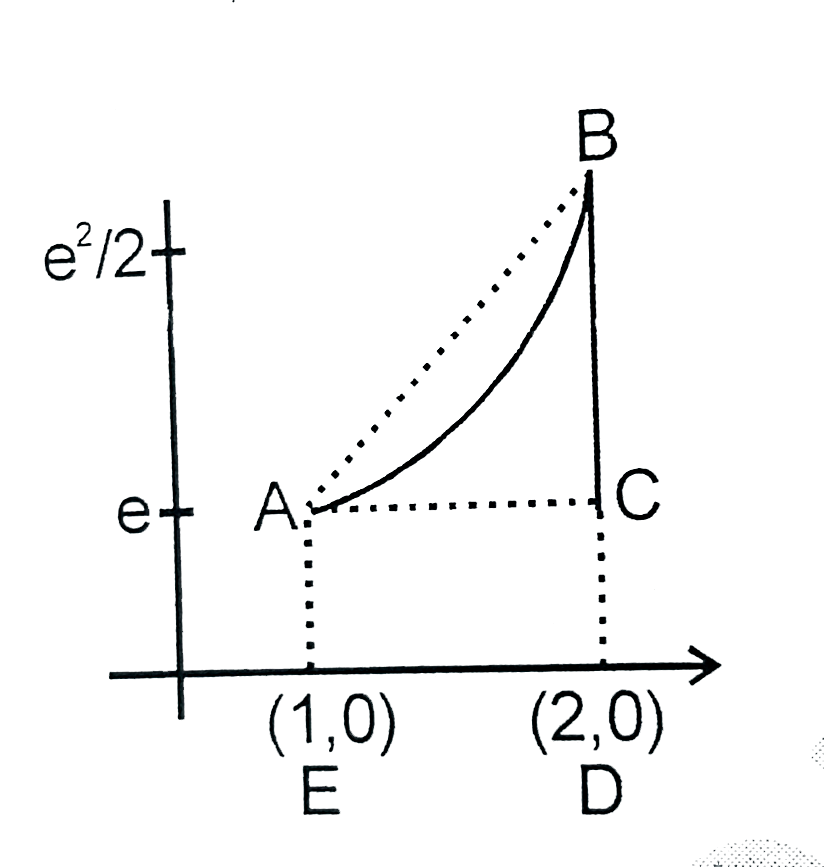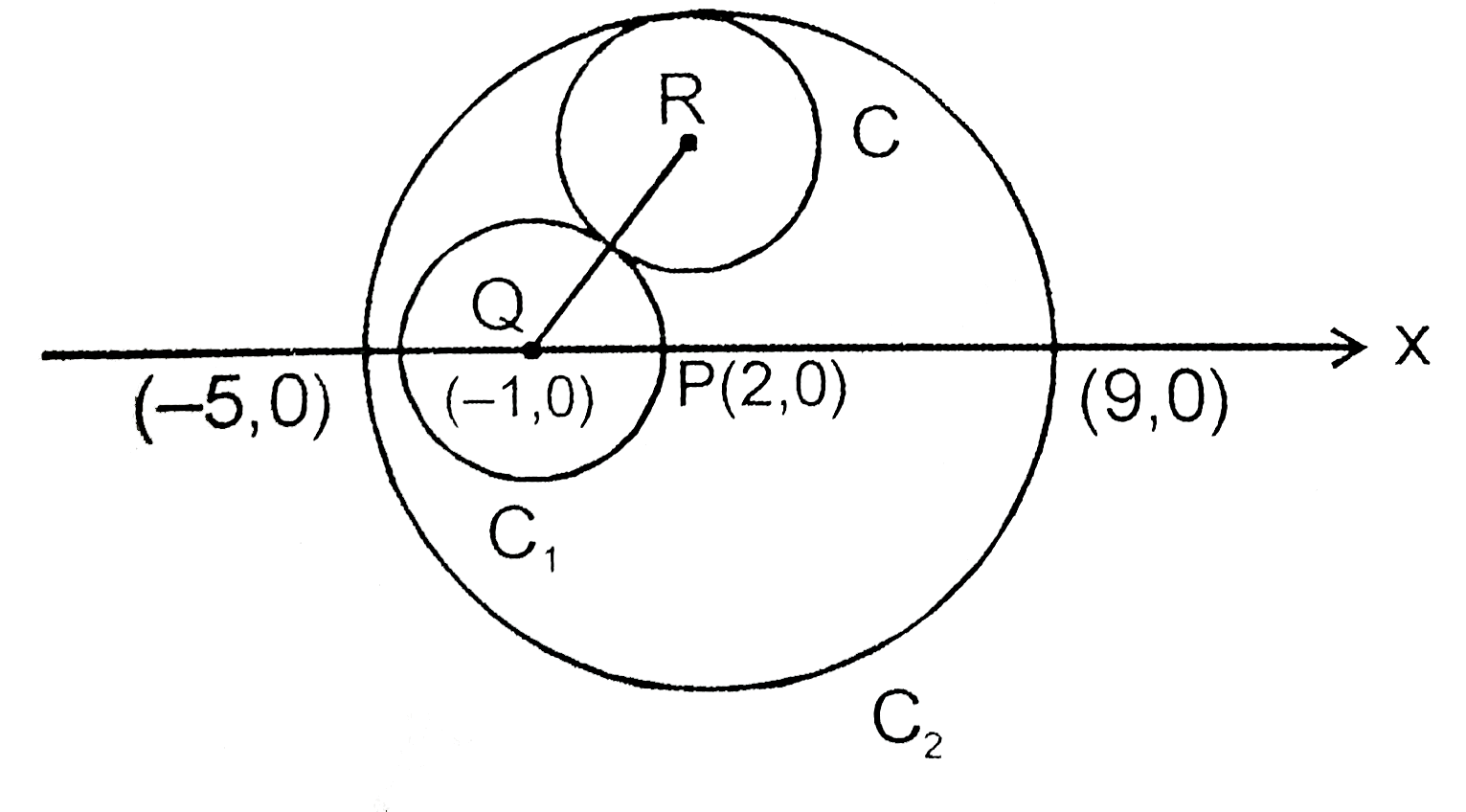InterviewSolution
This section includes InterviewSolutions, each offering curated multiple-choice questions to sharpen your knowledge and support exam preparation. Choose a topic below to get started.
| 1152. |
A metal 'M' having atomic mass 31.25 crystallizes in cubic close packing and it shows "Schottky defects". If the edge length of the cubic lattice is 500 pm and density of the metal is 1.6075 gm//ml then calculate number of moles of metal atom 'M' missing per litre of the crystal. Given : 1 amu = 1.67xx10^(-24)gm |
|
Answer» `(4xx(31.25)/(N_(A)))/((500xx10^(-10))^(3))=(4xx31.25xx1.67xx10^(-24))/(124xx10^(-24))=1.67g//ml` `rho_("actual")=1.6075g//ml` Difference DUE to SCHOTTKEY effect `= 1.67-1.6075rArr0.0625g//ml` `=0.0625xx10^(3)g//L` `=62.5 g//L` `=(62.5)/(31.25)` Mole/L `=2 "mole"//L` |
|
| 1153. |
If a3 xx 3square matrix satisfiesA^(3)-23A - 40 I = 0, " then "A^(-1)equals |
|
Answer» ` (1)/(40)[23 -A^(2)]` |
|
| 1154. |
Two third of the students of a class are boys and rest are girls . It is known that the probability of a girl getting a first division in Board examination is 0.4 and a boy getting first division is 0.35.Find the probability that a students chosen at random will get first division in Board examination. |
|
Answer» |
|
| 1155. |
The value of (sec x + tan x -1)/(tan x - sec x +1), if cosec 2x =2 is |
|
Answer» 0 |
|
| 1156. |
Find the equation of the circle passing through the points (1,1), (2,-1), and (3,2). |
|
Answer» |
|
| 1157. |
Which of the following is correct combination? |
|
Answer» <P>(I) (ii) (Q) |
|
| 1158. |
Which of the following is correct combination? |
|
Answer» (II) (III) (S) |
|
| 1159. |
Let z_(1),z_(2),z_(3) be three complex numbers satisfying 1/z_(1)+1/z_(2)+1/z_(3)=0. Let z_(k)=r_(k)(cosalpha_(k)+isinalpha_(k)) and omega_(k)=(cos2alpha_(k)+isin2alpha_(k))/(z_(k)) for k=1,2,3. If omega_(1),omega_(2) and omega_(3) are the affixes of points A_(1),A_(2) and A_(3) respectively in the Argand plane, then DeltaA_(1) A_(2) A_(3) has its |
|
Answer» INCENTER at the ORIGIN |
|
| 1160. |
Evaluate the following integrals. int(1)/(sin2x+sin^(2)x)dx |
|
Answer» |
|
| 1161. |
Solve the equation |[x+a,x,x],[x,x+a,x],[x,x,x+a]|=0, a ne0 |
|
Answer» SOLUTION :`X=-%` TAKE COMMON factor (3x+a) factor `R_1` Then apply `C_2rarrC_2` and `C_3rarrC_3-C_1` |
|
| 1162. |
If pair of tangents are drawn from any point (p) on the circle x^(2) + y^(2) = 1to the hyperbola x^(2)/2 - y^(2)/1 = 1 such that locus of circumcentre of triangle formed by pair of tangents and chord of contact is lambda_(1) x^(2) - 2lambda_(2)y^(2) = 2 (x^(2)/2 - y^(2))^(2), then |
|
Answer» `lambda_(1) = 2, lambda_(2)= 1` |
|
| 1163. |
x^(n)+ y^(n) is divisible by |
|
Answer» `x- " y for all "n in N` |
|
| 1164. |
If( sinx ) /( cosx)xx( secx )/( cosec x )xx ( tanx )/( cotx) = 9, wherex in( 0,(pi)/(2)) thenthevalueof x isequal to |
|
Answer» `PI/4` |
|
| 1165. |
Evaluate the following define integrals as limit of sums : int_(0)^(4) x^(2)dx |
|
Answer» |
|
| 1166. |
A pointon theplanethatpassesthroughthepoints(1,-1,6), (0,0,7)andperpendiculartothe planex- 2y + z =6is |
|
Answer» `(1,-1,2)` |
|
| 1167. |
If vectors : vec(p)=ahat(i)+hat(j)+hat(k),vec(q)=hat(i)+bhat(j)+hat(k),vec(r)=hat(i)+hat(j)+chat(k)(ane1,b ne1,c ne1) are coplanar, then value of (1)/(1-a)+(1)/(1-b)+(1)/(1-c)= |
|
Answer» 0 `f(x)=(e^(x))/(x),f'(x)=((x-1)e^(x))/(x^(2))gt 0 [AA x in (1,2)]` `rarrIgtAr.[ACDE]` ` I gt e xx 1 IMPLIES I gt e ....(1)` `rarr I lt "AREA of trapezium ABCDE"` `ILT (1)/(2)(1)[e+(e^(2))/(2)]` `I lt (e)/(2)+(e^(2))/(4)"".......(2)` `(I gt 3+(e)/(2))` is false from (2) 
|
|
| 1168. |
Differentiate tan^(-1)((2^(x+1))/(1-4^(x))) with respect to x. |
|
Answer» |
|
| 1169. |
The mean of 5 observations is 5 and their variance is 124. If three of the observations are 1,2 and 6, then the mean deviation from the mean of the data is |
|
Answer» 2.5 |
|
| 1170. |
Find the equation of tangentto the hyperbola (x^(2))/(3)-(y^(2))/(2)=1drawn from the point (3, 2) |
|
Answer» |
|
| 1171. |
Approximate theintegral I = int_(0)^(1) (dx)/(1 + x) using thetrapezoidal formulaat n = 10 |
|
Answer» |
|
| 1172. |
If O is the origin OP, OQ are the tangent to the circle x^(2)+y^(2)+2gx+2fy+c=0 then the circumcentre of the triangleOPQ is |
|
Answer» `(-G,-F)` |
|
| 1173. |
Find the number of integral solutions of x_1+x_2+x_3+x_4=4 where each x_ige-10 |
|
Answer» |
|
| 1174. |
Findthe areaof theregionboundedbyparabola y=2x^2 +10and the liney=4x+16. |
|
Answer» |
|
| 1175. |
Determine whether a ** b =a+b ("mod" 7) "on" {0,1,2,3,4,5,6}operations as defined by * are binary operations on the sets specified in each case. Give reasons if it is not a binary operation. |
|
Answer» SOLUTION :`a**B=a +b ("MOD" 7) in {0,1,2,3,4,5,6}` for "a,b in 7` ` :. **` is a , binary operation on the given SET. |
|
| 1176. |
Resolve (x^(4)+x^(2)+x+2)/((x^(2)-x+1)^(2)) into partial fractions |
|
Answer» |
|
| 1177. |
If I=int_(0)^(1)cos(2Cot^(-1)""(sqrt (1-x)/(1+x)))dx then |
|
Answer» `pi/2` |
|
| 1178. |
Define f(x) = {{:(x,(0le x le 1)),(2-x,(1 lex le 2)):} Then Rolle's theorem is not applicable to f(x) because |
|
Answer» F(x) is not DEFINED everywhere on [0, 2] |
|
| 1179. |
Two cards are randomly selected from a pack of 52 playing cards. The probability that both cards are greater than 3 and lessthan 8 is |
| Answer» Answer :A | |
| 1180. |
x = log (1/y +sqrt(1+1/(y^(2))))rArr yis equal to |
|
Answer» `TANHX` |
|
| 1181. |
If the three lines x – 3y = p, ax + 2y = q and ax + y = r from a right – angled triangle then: |
|
Answer» `a^2-6a-12=0` `therefore` value of a=3 satisfy the equation `a^2 - 9a +18=0` |
|
| 1182. |
Resolve (3x-1)/(x^(3)+1) into partial fractions. |
|
Answer» |
|
| 1183. |
There are five cities A, B, C, D, E on a certain island. Each city is connected to every other city by road. In how many ways can a person starting from city A come back to A after visiting some cities without visiting a city more than once and without taking the same road more than once ? (The order in which he visits the cities also matters. e.g., the routes A rarr B rarr C A and A rarr C rarr B rarr A are different). |
|
Answer» |
|
| 1184. |
Angle between the tangents drawn to parabola y^(2)+4a^(2)-4ax=0, from origin is : |
|
Answer» `30^(@)`  `C_(1):(x+1)^(2)+y^(2)=9,C_(2):(x-2)^(2)+y^(2)=49` `because QR = R+3` `PR = 7-r` `impliesPR+QR=10` `therefore` Locus of point R is an ELLIPSE for which 2a = 10 and P and Q are its FOCUS. `implies2a=10" and "2ae = PQ =3impliese=(3)/(10)` |
|
| 1185. |
Evaluate the following integrals inte^(x)cos^(2)xdx |
|
Answer» |
|
| 1186. |
If Delta_1=|{:(x,b,b),(a,x,b),(a,a,x):}|and Delta_2=|{:(x,b),(a,x):}| are given determinants then, |
|
Answer» `Delta_1=3(Delta_2)^2` |
|
| 1187. |
IfDelta= a^2- ( b-c)^2whereDeltais theareaof triangleABCthen tanA isequalto |
|
Answer» `(15 )/( 16)` |
|
| 1188. |
Area of the region bounded by two parabolas y = x^(2) and x = y^(2) is |
| Answer» Answer :B | |
| 1189. |
lim_(ntooo)(((n+1)(n+2)....3n)/(n^(2n)))^(1//n) is equal to |
|
Answer» `(27)/(e^(2))` |
|
| 1190. |
If A(n)=sin^(n)alpha+cos^(n)alpha, then A(1)A(4)+A(2)+A(5)= |
|
Answer» `A(1)A(2)+A(4)A(5)` |
|
| 1191. |
Evaluate the following definite integrals . int_(1)^(4)(x^(2)-x)dx |
|
Answer» |
|
| 1192. |
Evaluate the following determinants: [[0,a^2,b],[b^2,0,a^2],[a,b^2,0]] |
|
Answer» SOLUTION :`[[0,a^2,B],[b^2,0,a^2],[a,b^2,0]]` =`-a^2[[b^2,a^2],[a,0]]+b[[b^2,0],[a,b^2]]` =`-a^2(0-a^2)+b(b^4-0)=a^5+b^5` |
|
| 1193. |
A student appears for tests I, II and III. The student is successful if he passes either in tests I and II or tests I and III. The probabilities of the student passing in tests I, II, and III are, respectively, p, q, and 1/2. then p(1+q)= |
|
Answer» `1//2` `P[ANNB nnC')uu(AnnB'C')uu(AnnBnnC)]` `=P(AnnBnnC')+P(AnnB'nnC)+P(AnnBnnC)` `=P(A)P(B)P(C')+P(A)P(B')P(C')+P(A)P(B)P(C)` `""[thereforeA,B,C "are independent events"]` `=pq(1-(1)/(2))+p(1-q)1/2+pq1/2` `=pq+1/2p-1/2pq` `=1/2(pq+p)` `therefore1/2(pq+q)=1/2` `orp(1+q)=1` |
|
| 1194. |
Integrate the following functions tan^-1x |
|
Answer» Solution :`int tan^-1x DX ` =`int 1 XX tan^-1x dx` =`tan^-1x xx x-int1/(1+x^2) C dx` =`xtan^-1x -1/2 int (2x)/(1+x^2) dx` =`x tan^-1 x-1/2 LOG (1+x^2)+c` |
|
| 1195. |
In three dimensional space , the equation xy = 0 represents |
|
Answer» a PAIR of LINES |
|
| 1196. |
I: The equation obtained by removing second term from x^(4) + 8x^(3) + x - 5 = 0 is x^(4) - 24x^(2) + 65x - 55 = 0 . II: The equation whose roots are exceed by 2 than those of x^(3) - 2x^(2) + 3x - 1= 0 is x^(3) - 8x^(2) + 23x - 23 = 0. |
|
Answer» only I is TRUE |
|
| 1197. |
The solution of (dy)/(dx) = e^(x+y)+ x^(2)e^(x^(3)+y) is |
|
Answer» `E^(x) - e^(-y) + (1)/(3)e^(x^(3)) = c` |
|
| 1198. |
Analyse the following pairs of compounds. Weite 1, if they are Chain isomers Write 2, if they are Metamers Write 3, if they are Position isomers Write 4, if they are Homologues Write5, if they are Ring chain isomers Write6, if they are Resonating structure Write7, if they are Functional isomers Write8, if they are Tautomers |
|
Answer»
`(c) "as parent CABON chain is different"""]` |
|
| 1200. |
Evalute the following integrals int (1)/(cos (x -a ) cos (x - b))dx |
|
Answer» |
|